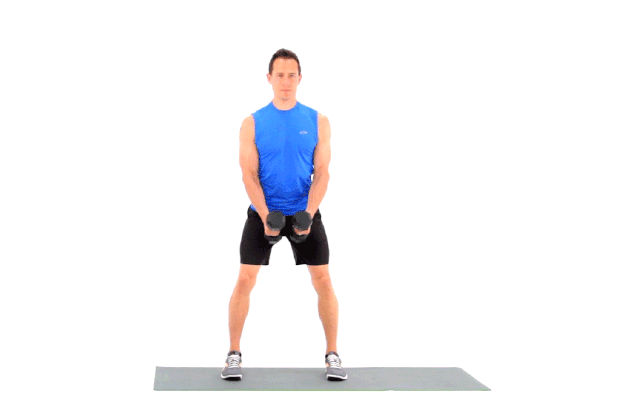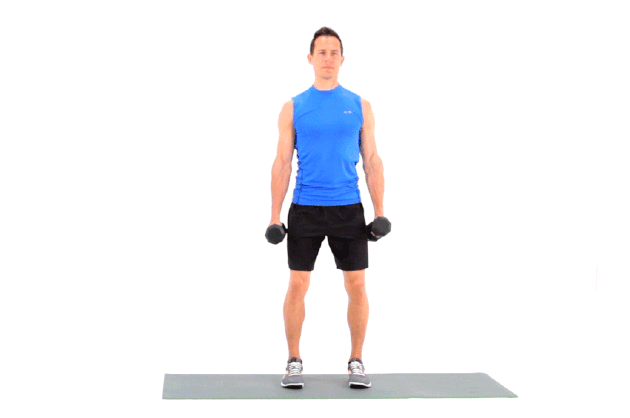Lateral Raise vs. Forward Raise
Lateral raises and forward, or front, raises are exercises that many people do when working their shoulders with weights. These exercises are similar in a number of ways, but distinct differences may determine which ones you emphasize and how often you do them. It is good to include both in a well-rounded shoulder workout.

Exercise Type

Forward raises and lateral raises are the same type of exercise. Exercises are classified according to the number of joints at which motion is taking place. Isolation movements involve motion at one joint only, while compound movements require motion at more than one. Lateral raises and front raises are isolation movements.
Shoulder Joint Anatomy
In both exercises, movement occurs at the glenohumeral joint, or shoulder. This joint is formed by the articulation of the spherical head of your humerus, or upper-arm bone, with the socket of your scapula, or shoulder blade. There are 11 muscles that cross and create movement at this joint.
Movement Plane
Forward raises and lateral raises involve movement in different directions. Motion at joints is classified relative to three movement planes that are parallel to one another. The sagittal plane passes through the body from front to back. Your humerus moves in the sagittal plane when you perform forward raises. The frontal plane passes through the body from side to side. Your humerus moves in the frontal plane when you perform lateral raises.
Joint Movement
Forward raises and lateral raises involve different joint motions. Movements in different planes are called different names. For example, motion in the sagittal plane where the angle at the joint diminishes is called flexion. This is what occurs when you perform forward raises. When you do lateral raises, abduction is taking place. This is movement away from the body’s midline in the frontal plane.
Muscles Recruited
Front raises and lateral raises work different muscles. Humeral flexion against resistance is produced by the clavicular portion of your pectoralis major and the anterior head of your deltoid. Your coracobrachialis and biceps brachii also contribute. Humeral abduction against opposition is produced by the medial head of your deltoid and the supraspinatus of your rotator cuff.
Loading Methods
Forward raises and lateral raises can be done using either the same or different types of loading. Both movements are often performed while holding dumbbells and both can also be done on a cable machine. In each case, these movements can be done one arm at a time or with both arms simultaneously. Front raises and lateral raises can both be performed using resistance bands. Front raises can be done while holding a barbell or weight plate, but lateral raises cannot be performed in this manner. Lateral raises can be performed on machines with arm pads designed for the purpose. There are no machines made specifically for forward raises.
Discover more from ReviewFitHealth.com
Subscribe to get the latest posts sent to your email.